Venus
Printable
version
March
27, 2000
Announcements
-
Turn
in homework #4
-
Solutions
to homework #4 on web later today
-
Drop
date this Friday, March 31
-
Next
Honors section:
-
Wed
April 5 (weather permitting) probably at 7:30pm or later
Venus
Preview
-
Venus
overview
-
Observing
Venus from Earth
-
Retrograde
rotation:
puzzle
-
CO2
in Venus' atmosphere causes greenhouse effect
-
Average
surface temperature hotter than Mercury's!
-
Structure,
composition of Venus' atmosphere
-
History
of Venus' atmosphere
-
The
surface of Venus
-
no
plate tectonics
-
several
volcanos
-
some
local crust motions (vertical)
-
not
many craters
Venus
Overview
-
Venus
is similar in size, density, surface gravity to Earth
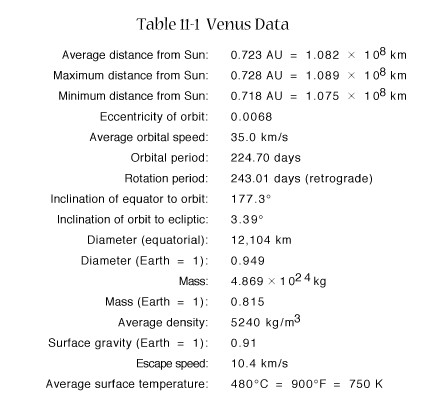
Observing
Venus from Earth
-
Venus reflects 76% of sunlight
-
compare 12% for Mercury
-
Mercury is closer to sun,
brighter
-
Greatest elongations are
47 degrees
-
visible for ~3 hours after
sunset or before sunrise
-
easier to see than Mercury
-
Ring-like appearance at inferior
conjunction evidence for atmosphere
-
similar to why moon turns
orange in lunar eclipse
-
Featureless ball to optical
earth telescopes
-
evidence for complete cloud
cover
-
high albedo (reflectance)
also evidence for clouds
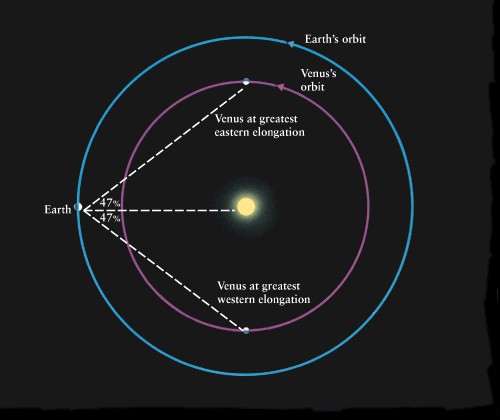
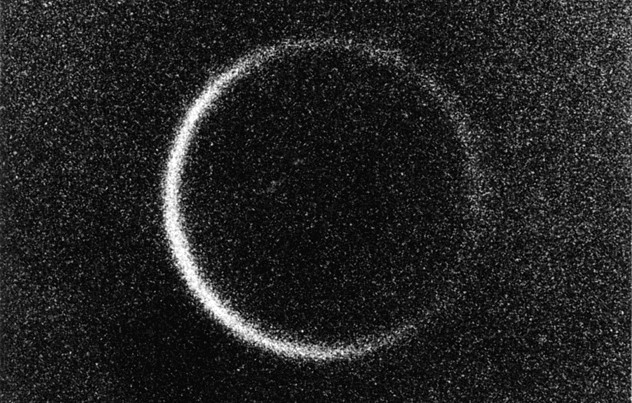
Retrograde
Rotation
-
Venus rotates backwards
-
Retrograde rotation is unusual
-
Uncertain of cause
-
formation likely prograde
-
hit by planetesimal?
-
sidereal period 243.01 earth
days (slow!)
-
orbital period 224.70
Structure
and Composition of Atmosphere
-
US and Soviet unmanned space
probe visits since 1960s
-
Thick atmosphere
-
90 times more pressure at
surface than Earth!
-
Like being 1000 m deep in
ocean
-
Clouds confined to 20 km
layer ~60 km from surface
-
20 km thick haze layers above
and below clouds
-
Temperature profile simpler
than Earth's
-
Sulfur rich atmosphere, very
little water
-
Instead of water droplet
clouds, sulfuric acid clouds!
-
Acid eats spacecraft
-
Circulation simpler than
Earth's because of slow rotation
-
Convection driven by cloud
layer
-
hot air rises at equator,
cools, falls at poles
-
the rest of the atmosphere
pushed by that motion
-
Upper atmosphere rotates
around planet in 4 days!
-
East to west, pushes on clouds
to make < shapes
-
Upper atmosphere winds 220
mi/hr
-
Surface winds 3 mi/hr
-
slowed by friction with surface
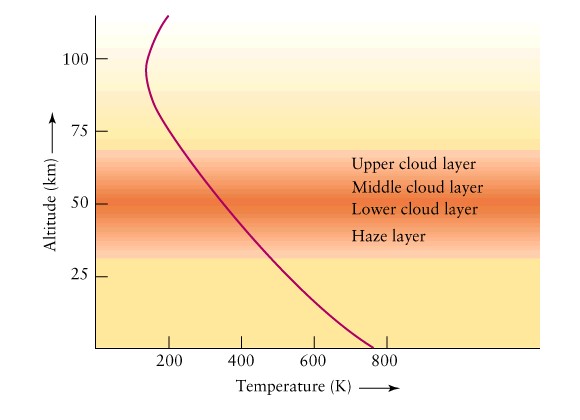
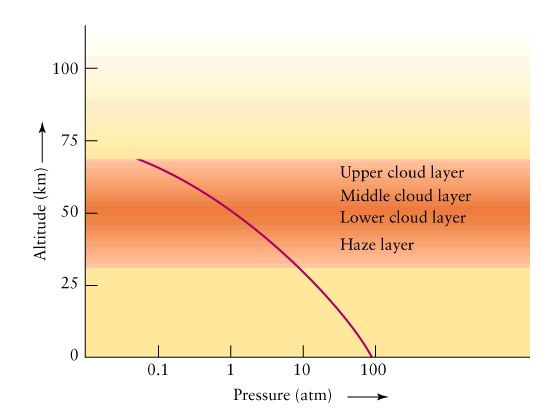
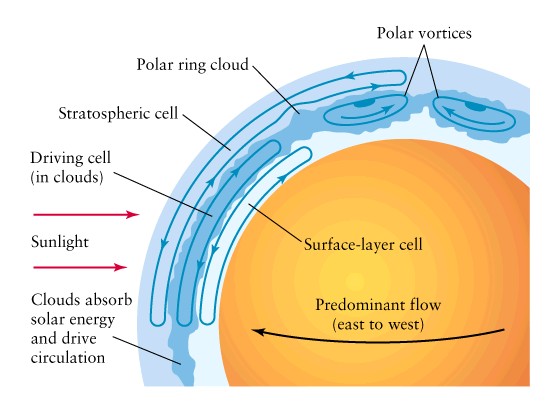

History
of Venus' Atmosphere
-
Similar orbit and planet
size to Earth, probably started the same
-
Sun may have been 70% cooler
-
Venus may have had water
oceans
-
Made water clouds, which
helped trap heat (greenhouse effect on Venus and Earth)
-
On Earth, life started Early,
plants absorbed CO2, gave off Oxygen, Ozone layer formed
-
Venus closer to sun, a little
warmer, not rotating as fast...
-
On Venus, no life, or life
didn't make it, lots of CO2 in atmosphere, no Ozone
-
As Sun warmed up, Venus got
hotter
-
oceans started to evaporate
more
-
more clouds
-
more greenhouse effect
-
...runaway greenhouse effect
-
Evaporated all water on Venus
-
At top of atmosphere, sunlight
breaks water up
-
Hydrogen escapes (too little
gravity--same on Earth)
-
High temperatures bake CO2
out of rocks
-
CO2 contributes
to greenhouse effect, replaced water as reflecting blanket
-
On Earth, CO2
absorbed by plants and chemical reactions with water and rocks that
form carbonate rocks like limestone
-
Plate tectonics on Earth
can expose fresh rock
-
Formation of Himalayas may
have caused last ice age
-
Venus has no plate tectonics
-
Earth has life, Venus does
not
Surface
of Venus
-
Venus
has several volcanoes
-
hot
spot volcanism
-
active
in at least the last 10 million years
-
Varying
levels of sulfur in atmosphere
-
volcanoes
may be currently active
-
Much
of surface seems to have been covered with lava
-
broken
crust seen at landing site
-
long
lava channel
-
relatively
few craters
-
Many
crust fractures
-
Pancake
domes, corona
-
crust
may be thinner than Earth's
-
Two
"continents"
-
Ishtar
terra
-
Aphrodite
terra



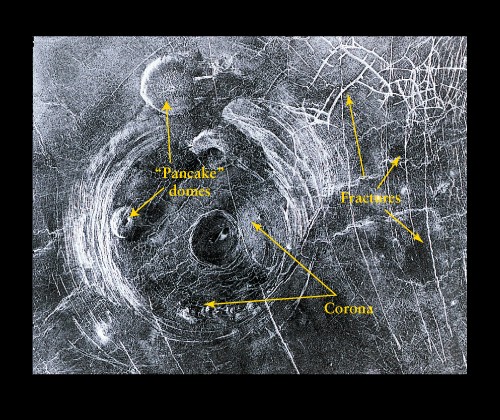


Venus
Summary
-
Venus
overview
-
Observing
Venus from Earth
-
Retrograde
rotation:
puzzle
-
CO2
in Venus' atmosphere causes greenhouse effect
-
Average
surface temperature hotter than Mercury's!
-
Structure,
composition of Venus' atmosphere
-
History
of Venus' atmosphere
-
The
surface of Venus
-
no
plate tectonics
-
several
volcanos
-
some
local crust motions (vertical)
-
not
many craters













